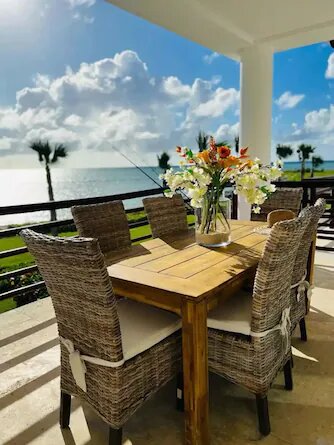What is Cap Cana?
Cap Cana is a luxury resort and residential community located in Punta Cana, on the eastern coast of the Dominican Republic. The development spans over 30,000 acres and includes beaches, marinas, golf courses, luxury hotels, villas, and condominiums.
Cap Cana was designed as a high-end destination for discerning travelers and property owners, offering a wide range of amenities and activities. The community features several championship golf courses, including the Punta Espada Golf Club, which has been ranked as the best golf course in the Caribbean and Mexico by Golfweek magazine.
In addition to golf, Cap Cana offers a range of other outdoor activities, such as sport fishing, yachting, and water sports. The community also features a state-of-the-art marina, which can accommodate yachts of up to 150 feet in length.
Cap Cana is known for its luxurious accommodations, which include high-end hotels and private villas. The community is home to several five-star resorts, including the Sanctuary Cap Cana, the Eden Roc at Cap Cana, and the Secrets Cap Cana Resort and Spa.
Overall, Cap Cana is a world-class destination for those seeking luxury, relaxation, and outdoor adventure in a tropical setting
How far a ride is it from the airport?
Cap Cana is located approximately 10 miles (16 kilometers) to the south of Punta Cana International Airport (PUJ). The distance between the airport and Cap Cana can be covered by taxi, shuttle, or private transportation, and typically takes around 20 minutes, depending on traffic conditions. Most hotels and resorts in Cap Cana offer transportation services to and from the airport for their guests, which can be arranged in advance or upon arrival.
Hurricanes – what does the season look like?
Cap Cana, like many other locations in the Caribbean, is susceptible to hurricanes during the Atlantic hurricane season, which officially runs from June 1 to November 30.
However, it’s worth noting that Cap Cana is located on the eastern side of the Dominican Republic, which is generally less affected by hurricanes compared to other areas of the Caribbean. Additionally, the resort has well-established emergency procedures in place to ensure the safety and well-being of its guests and residents during any severe weather events.
It’s always advisable to stay informed about weather conditions and potential storms during hurricane season if you plan to visit or stay in Cap Cana or any other Caribbean destination. You can check with the National Hurricane Center or other reliable weather sources.
Safety is a hallmark of Cap Cana's reputation!
Cap Cana is considered extremely safe for several reasons:
- Security measures: The Cap Cana community has a strong security presence, including private security personnel and surveillance systems, to ensure the safety and well-being of guests and residents.
- Controlled access: Cap Cana has controlled access points, which help to limit access to the resort and prevent unwanted visitors from entering the community.
- High-end amenities: Cap Cana is a luxury resort community, attracting visitors who are looking for high-end accommodations and activities. This demographic tends to be more security-conscious, which further enhances safety in the community.
- Limited public access: Many of the amenities and activities in Cap Cana are only available to guests of the resorts or property owners within the community, which limits public access and helps to maintain a secure and exclusive environment.
- Overall, while no location can be guaranteed to be completely free of risk, the combination of security measures, controlled access, and high-end amenities make Cap Cana a very safe destination.
Does the Dollar go far in Cap Cana?
The American dollar is widely accepted in Cap Cana, as well as throughout the Dominican Republic, and is the official currency of the country. As a result, the exchange rate between the US dollar and the Dominican peso can affect how far the American dollar goes in Cap Cana.
As of September 2021, the exchange rate between the US dollar and the Dominican peso was approximately 1 USD to 56 DOP. This means that for every US dollar, you could get around 56 Dominican pesos.
The cost of goods and services in Cap Cana can vary widely, depending on the type of product or service, and where you purchase it. Cap Cana is considered a luxury destination, so prices for high-end accommodations, fine dining, and other exclusive experiences may be higher than in other parts of the Dominican Republic.
However, compared to many other popular tourist destinations around the world, the Dominican Republic generally offers a good value for travelers, and the American dollar can go relatively far in terms of purchasing power. It is always a good idea to research prices and exchange rates before traveling, so you can budget accordingly and get the most out of your trip to Cap Cana.
Driving in and around Cap Cana…
The roads in Cap Cana are paved and very well-maintained, making for relatively smooth driving conditions.
While Cap Cana is considered an exclusive area, and void of major traffic, the main road leading into Cap Cana, through Punta Cana, can be heavy at times – especially during peak tourist season or major events. This can lead to congestion on the roads, which can be frustrating for drivers. However, the main roads in Punta Cana are generally designed to handle high volumes of traffic, and there are often alternative routes available to avoid particularly congested areas.
Overall, driving in Cap Cana should offer very few challenges, the infrastructure is exceptional and able to support safe and efficient driving for those who are familiar with the local conditions. As with any location, it’s important to exercise caution, be aware of your surroundings, and follow local driving laws and regulations to ensure a safe and enjoyable experience.
What do I need to be aware of when I travel to Cap Cana, if its that exclusive, how will I get in?
- Access control: Cap Cana has controlled access points, which means that entry to the community is restricted to those who have a valid reason for being there, such as residents, guests of the resorts, or those with a valid reservation for a restaurant or activity within the community. Access is typically granted through a security gate, where guests WILL be asked to provide identification and a valid reason for entering. This is generally arranged for prior to rental and each guest must be acknowledged and authorized, prior to entry into the community.
- Security screening: For the safety of guests and residents, security personnel may conduct screenings of vehicles or individuals entering Cap Cana to ensure that no prohibited items or individuals are entering the community.
- Overall, while there are some entry requirements and security measures in place, entering Cap Cana is generally a straightforward process as long as you have a valid reason for being there and are prepared to provide any necessary documentation or identification.
Is there a GYM in CAP CANA?
There are several to speak of, but the one that will most likely fit the bill is Powerfit Studio, located approximately 500 yards up the road. It’s a small, well equipped and as of this writing the rates are $30 per day or $100 for four visits.
What other options or services might be available that I haven't considered?
Apart from the usual interest in a beachfront location, swimming pools, restaurants, and amenities, we often receive inquiries about the following:
- Travel to and from the airport
- Kayaks
- Bicycles
- Cribs
- Car rentals
- Refrigerator stocking service (prior to your arrival)
- Private chef services
- Excursion bookings
While we do not directly provide these items or services, the property management team that oversees the unit can assist you in arranging them. You can make these arrangements either before or after booking the unit. Please be aware that these services come with associated fees, which should be agreed upon before scheduling them. It is essential to understand that Unit A23 Punta Palmera is a separate entity from the mentioned “service provider” and is not compensated or involved in the execution of these services beyond initiating the initial communication.

